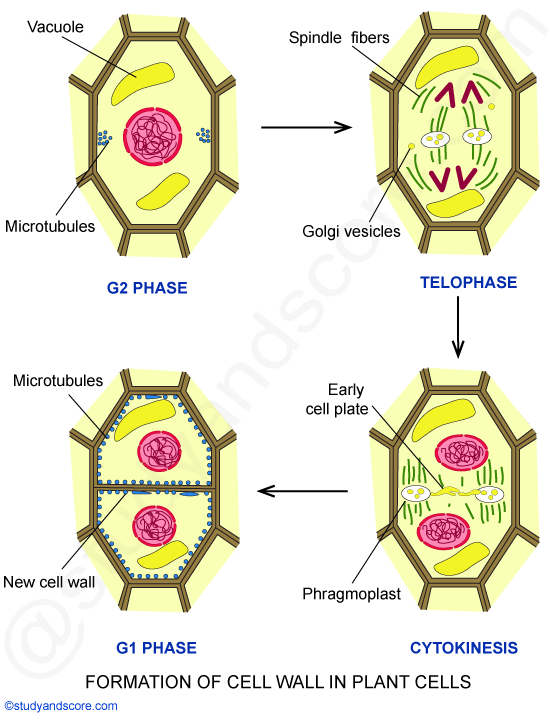Chemically the cell wall of the plant cell is composed of a variety of polysaccharides, lipids, proteins and mineral deposits. In most of the plant cells, the cell wall is made up of cellulose, hemicellulose, pectin and protein. In fungi, the cell wall is made up of chitin and in bacteria the cell wall is composed of protein-lipid polysaccharide complex like peptidoglycan. The following is the chemical composition of a typical plant cell wall:
Pectic acid: It is the major component of the middle lamella but is also found in the primary walls. Pectic acid is the polymer of about 100 galacturonic acid molecules. It is hydrophilic in nature. It forms salt bridges with calcium and magnesium ions. The carboxyl groups of the galacturonic acid molecules are weak acids so they can exist in negatively charged and uncharged states depending on the protonation.
Pectin: It is the major component of the middle lamella but is also found in the primary walls. It is a polymer of around 200 galacturonic acid molecules. Compared to pectic acid it is less hydrated. It is soluble in hot water.
Cellulose: It is the polymer of around 1000 to 10,000 beta-D-glucose residues. It is the major component of the primary and secondary wall layers. The cellulose polymers associate through hydrogen bonds. This association of H-bonds results in the formation of microfibers and macrofibers which in turn interact with each other to form fibers.
Starch: It is the polymer glucose. However instead of β-1, 4 linage starch uses α-1, 4 linkage. This causes the polymer to take on a twisted configuration instead of linear shape. Due to this twisted configuration starch molecules assume globular structure. Generally starch molecules are branched. In plants, they are found only in plastids.
Hemicellulose: It is a polysaccharide composed of a variety of sugars including xylose, arabinose and mannose. Hemicellulose molecules are often branched and hydrophilic. Often it becomes highly hydrated and forms gels. It is abundant in the primary walls and is also found in the secondary walls.
Other structural proteins: Cell wall also consists of proteins apart from carbohydrate molecules. One of the main proteins found in the cell wall is glycoprotein which is the composition of carbohydrate and protein. Cell wall proteins are characterized by presence of abundance of amino acid hydroxyproline. Structural proteins are found in all layers of the plant cell wall but they are more abundant in the primary wall layer. Glycoproteins are hydrophilic; they form H-bonds and salt bridges with cell wall polysaccharides.
Another important structural cell wall protein is extension which forms covalent bonds with other extension proteins through amino acid tyrosine. The amount of extension changes with the development of the cell. Cells that have thick, hard walls are often rich in extension. The amount of extension produced is dependent on mechanical wounding and infection.
After nuclear division, when cytokinesis starts the cell wall is formed from the elements of Golgi complex and endoplasmic reticulum. The elements of golgi and endoplasmic reticulum align on the equatorial plate.
Middle lamella is formed by the deposition of calcium and magnesium pectates. Primary cell wall is secreted by protoplasm which lies inside middle lamella. Secondary cell wall is secreted by protoplasm which lied inside primary wall.
The following are the steps in the formation of the cell wall,

Just after formation, the cell wall is very thin and delicate. Later it grows by the deposition of the substances on the primary cell wall. The growth of cell wall occurs by two methods described as follows:
Intussusception: The growth that occurs by deposition of the cell wall material into the spaces present with in the cell wall is called as intussusception. As a result the surface area of the cell wall increases.
Apposition: New cell wall materials are deposited on the surface of the existing cell wall in the form of thin layers. It results in the increase in the thickness of the existing cell wall. Apposition is also called accretion.
For various functional purposes, additional materials are deposited in the secondary cell wall. These depositions include:

- Share with your friends! -
Login to post your comment here...
- or with social Account -